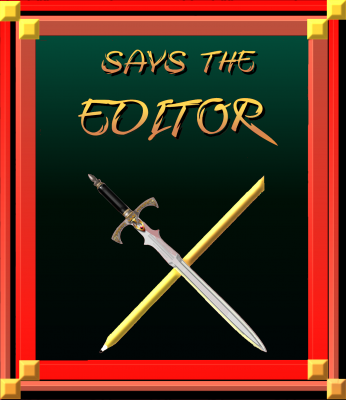August 26, 2021
 While we were talking last week about Effect and Cause, I forgot to mention something I’d actually written down so I’d remember!
While we were talking last week about Effect and Cause, I forgot to mention something I’d actually written down so I’d remember!
So here’s the sentence. I changed it from the original, of course. I’m not here to make fun of my clients! However, they do inspire me. Daily.
A flush crept over her cheeks after she leaned back and met his gaze.
See how that’s problematic? We get the result before we’re told what’s happening. And while his gaze can be a delicious thing to end a sentence on, I think in this case that the important detail here isn’t him, but her.
So I’d rewrite it as:
A flush crept over her cheeks, but she leaned back and met his gaze anyway.
Aha. Now there’s some meat in there. She’s embarrassed by something, but not so much that she’s ready to run and hide from him. If anything, she’s owning it. She’s a brave one, our unnamed heroine.
And here’s what I wrote to the author. Yes, this part is verbatim because it’s my words and I liked them so much I wanted to share them with all of you. (Yes, as in why confine my brilliance to just one person?)
Here, you can have the effect happen as part of the whole moment. Doing it this way is super; it makes each moment bigger, fuller. It’s a broader brush stroke instead of making the reader’s brain stop and take in each individual movement.
Or, like I said above, it’s putting some meat on the same set of actions, giving us something that helps bring these people (well, at least her) alive. And that’s what you want: Characters to feel alive. You want the reader to be able to learn more than a simple set of actions; you want to give us some characterization as well.
Holler, as always, if you need help.
August 19, 2021

I’ve been seeing this crop up lately, so let’s talk about how your narrative sequences things: cause and effect, or effect and cause?
Need an example? Here’s one: He turned when he felt…
Now, that seems like it’d work, right? It heightens the drama… He turned! Why did he turn? Well, keep reading and we’ll tell you it’s because he felt (whatever it was that he felt).
But do you see what’s happening here? You have effect and cause, not cause and effect.
Or, in other terms: The character reacts to something before the reader knows what s/he/they are reacting TO. It’s not only a reaction. It can be any motion out there. She walked up the front steps after closing the car door.
As an author working on your first draft, it’s one thing to do this. The first draft, after all, is for figuring out where the story’s going, what’s happening on the page, how the characters are moving (and why)… it’s for learning. This is why I always encourage authors to not be afraid to puke on the page. Get it out, get it down, go back and craft it later.
It’s that later that often becomes a problem. Because it’s one more thing you have to look for, be alert for, know if you have a tendency to do this or not. (Most of us do.)
Go on. Take a look at your work-in-progress. Do you have cause and effect, or do you have effect and cause? And can you think of a time when effect and cause is the better option? I actually can! Don’t rest on your laurels, though. Check your WIP. I bet you’ve got some.
Remember, if you’d like to work with Editor Susan over here, I’m now booked up until November. I’m only taking rush jobs from existing clients; I’m holding up too many careers as it is! And don’t set a bloody presale date until AFTER you’ve gotten your manuscript through the editing stage, just in case your editor is backed up and/or you wind up with unanticipated rewrites.